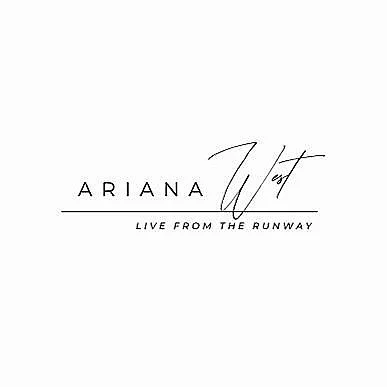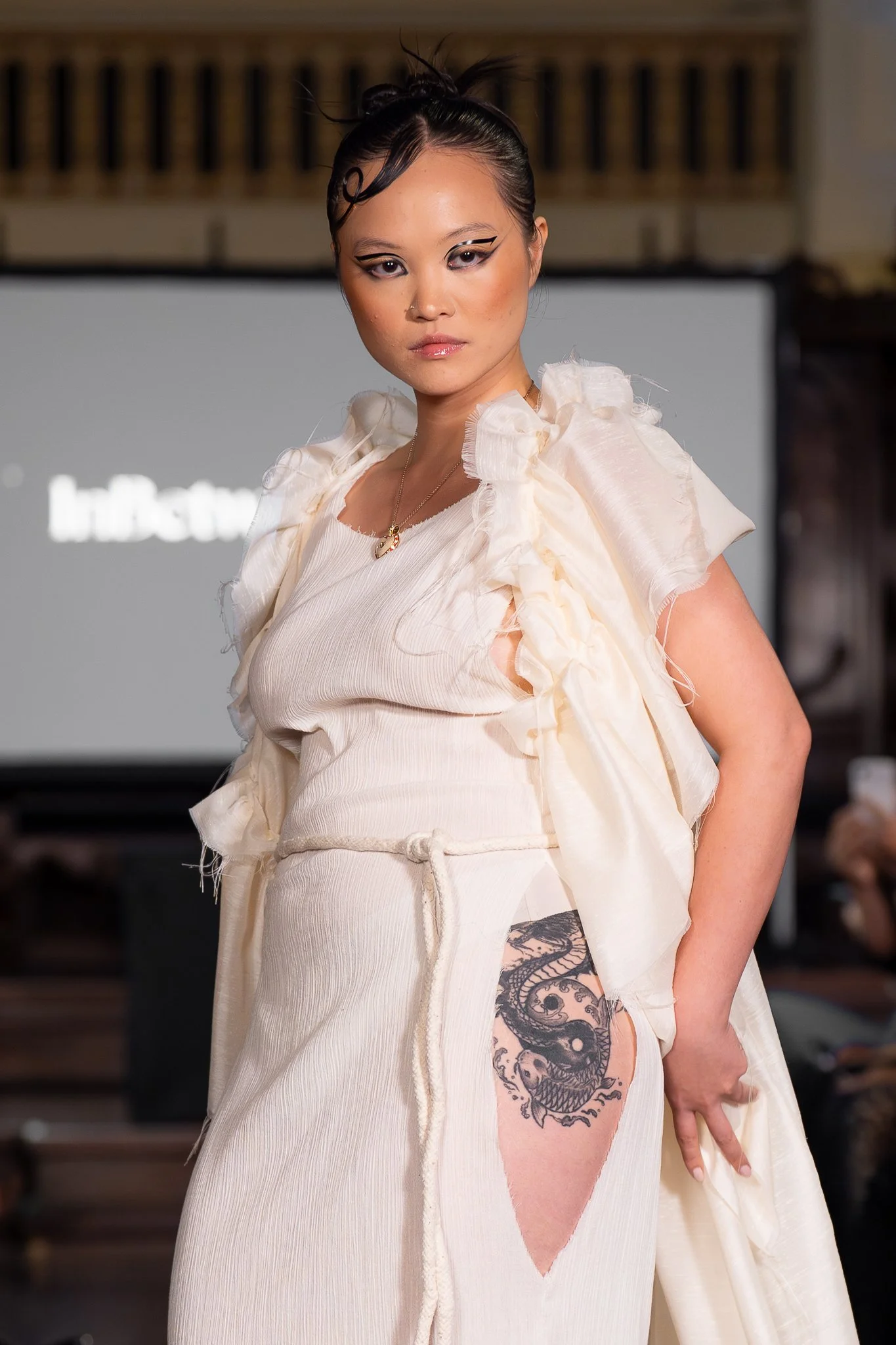THE WHY NOT PETITES FASHION SHOW PREMIERES IN CHICAGO WITH A CELEBRATION OF FORM, FANTASY, AND FEMININITY
At the core, the essence of Chicago Fashion Week lies in diversity and inclusivity. Designers from every background come together to showcase collections that reflect not only global trends but also the city’s unique tapestry of cultures, neighborhoods, and creative voices.
Written By Ariana West, Photography By Alex Calleljo
CHICAGO, IL, October 10, 2025 — In the opulent halls of the *Richard H. Driehaus Museum*, where stained glass meets Gilded Age grandeur, the inaugural *Why Not Petites* fashion show premiered last Friday during Chicago Fashion Week. A celebration of style, structure, and the long-overlooked power of petite expression, the showcase unfolded with the theme: “The Blueprint: The Architecture of Design.”
Curated and hosted with sharp wit and sartorial savvy by Brittney Wittes, the evening was more than a runway — it was a reclamation. The models, all 5’4” and under, walked with unapologetic confidence through the marble-lined corridors, challenging the long-held norms of height as hierarchy in fashion. With just four designers, each offering a sharply distinct vision of architectural storytelling, the show proved that great design isn’t measured in inches — but in ideas.
I Am Sister's Party: The Balloon Couture Renaissance
Where fashion meets art, where self-expression is celebrated, and where the city’s creativity takes center stage.
The night opened with a burst — quite literally — as *I Am Sister’s Party* delivered a sculptural confection of *balloon evening gowns*. Think: couture meets Cirque. The collection took the theme of architecture to new extremes, playing with volume, suspension, and fragility.
Models floated — not walked — down the runway in gowns made of hand-twisted latex balloons, some shimmering in metallic hues, others shaped into swooping hoop skirts and corseted bodices. The designs evoked Gothic arches, tensile bridges, and the curves of Gaudí’s Barcelona — all while remaining weightless.
Whimsical, subversive, and more technically engineered than they let on, these balloon gowns turned bodies into moving structures. A standout piece: a tiered violet balloon dress resembling a Baroque dome, complete with an internal skeleton of support and intricate design pattern.
Known for architectural silhouettes and daring use of a delicate material, this business specializes in rental of tablecloths and party decorations. For Chicago Fashion Week, they completed a couture-looking collection of balloons. The composed cascade of aura iridescence gave the idea of heiress a whole new “air” and surprised the crowd by softening usual garment-made style with flowing bias-cut dresses made entirely out of balloons.
Jordan Chavez: In-Between Branches
If Sister’s Party was levity, Designer Jordan Chavez brought grounded introspection. His collection, *In Between Branches*, was inspired by the quiet geometry of nature — tree limbs, leaf veins, root systems. Designs emerged in layered organza, raw silk, and pressed cottons, with silhouettes that echoed the fractal branching patterns of forests and the asymmetry of growth. Transcending from his latest pieces from a collection titled Rural Renaissance, this petite-made cuts gave allegory to the fight in which what was rightfully one’s own creative vision must be restored, refurbished, and re-visioned to create something even more ominous and amazing.
Chavez’s palette was organic: lichen green, bark brown, petrichor gray. But the construction was meticulous, almost mathematical. Wrap dresses unfolded like unfurling petals. Jackets were cut with triangular inserts that mimicked tree rings, evoked the duality of vulnerability and structure. Chavez, ever the poet of form, created a visual meditation on the architecture that nature builds — without blueprints.
Darien Boyd Buchanan: I Am Fabric Da Vinci
Then came *Darien*, whose much-anticipated collection, *I Am Fabric Da Vinci*, turned the runway into a laboratory of renaissance futurism. As both architect and artisan, Darien fused the intellectual rigor of Vitruvian symmetry with the wild abandon of fashion deconstruction.
Each piece felt like a thesis in textile engineering: sculpted neoprene coats with collapsible collars; modular dresses that could be zipped, inverted, or re-draped mid-stride; sleeves that folded like accordion wings; bustiers etched with topographical patterns inspired by Da Vinci’s anatomical sketches.
The garments, though technical, never lost sensuality. Describing himself online as a globetrotter and scholar, Darien dares to embrace soft monochromes and tactile textures.
“This fabric felt like an extension of myself both ethnically and in lightness,’ Darien describes in passing to correspondents post-show “But none of this magic happens alone; it takes an extraordinary village and only together it brings a vision to life.” His spirited showed in his collection as
Darien’s manifesto was clear: the body is a blueprint, and clothing is the frame through which we realize — or reimagine — our design.
Hillary Rings: The Soft Architecture of Femininity
Finally, *Hillary Rings* closed the evening with a bouquet of beauty. Known for her ultra-feminine silhouettes and florally embellished craftsmanship, Rings delivered a collection that felt like a spring garden grown within a greenhouse of exacting design.
Her floral skirts — some hand-embroidered, others blooming in layered tulle — swayed with architectural elegance. Paired with tailored bodices and sharply cut mini dresses, each piece balanced softness with structure. Her color story bloomed from blush to daisy yellow, with pops of peony pink and gardenia white.
A key motif: flower appliqués shaped like Gothic rose windows — a nod to architectural glasswork reinterpreted in silk. Another: mini dresses with blooming bustles in back, the silhouette a wink to Victorian propriety with a 21st-century flirtation.
Rings reminded us that architecture isn’t always steel and glass. It can be petals, poetry, and the carefully plotted arc of a hemline.
A Moment for the Movement
The Why Not Petites showcase wasn’t merely a novelty — it was a necessary correction. In an industry that too often sidelines the small-statured, the event reasserted that style is not scaled by size.
More than that, it demonstrated how diverse interpretations of "structure" — whether through latex, nature, futurism, or florals — can redefine what fashion architecture looks like when it starts from the body, not the blueprint. By spotlighting these four boundary-pushing designers, *Why Not Petites* didn’t just make a statement. It built a foundation.
And as guests dazzled beneath the marble ceilings of the Driehaus Mansion, one thing was clear: The future of fashion has room for every frame — especially the ones who’ve always been asked to stand on boxes.
























